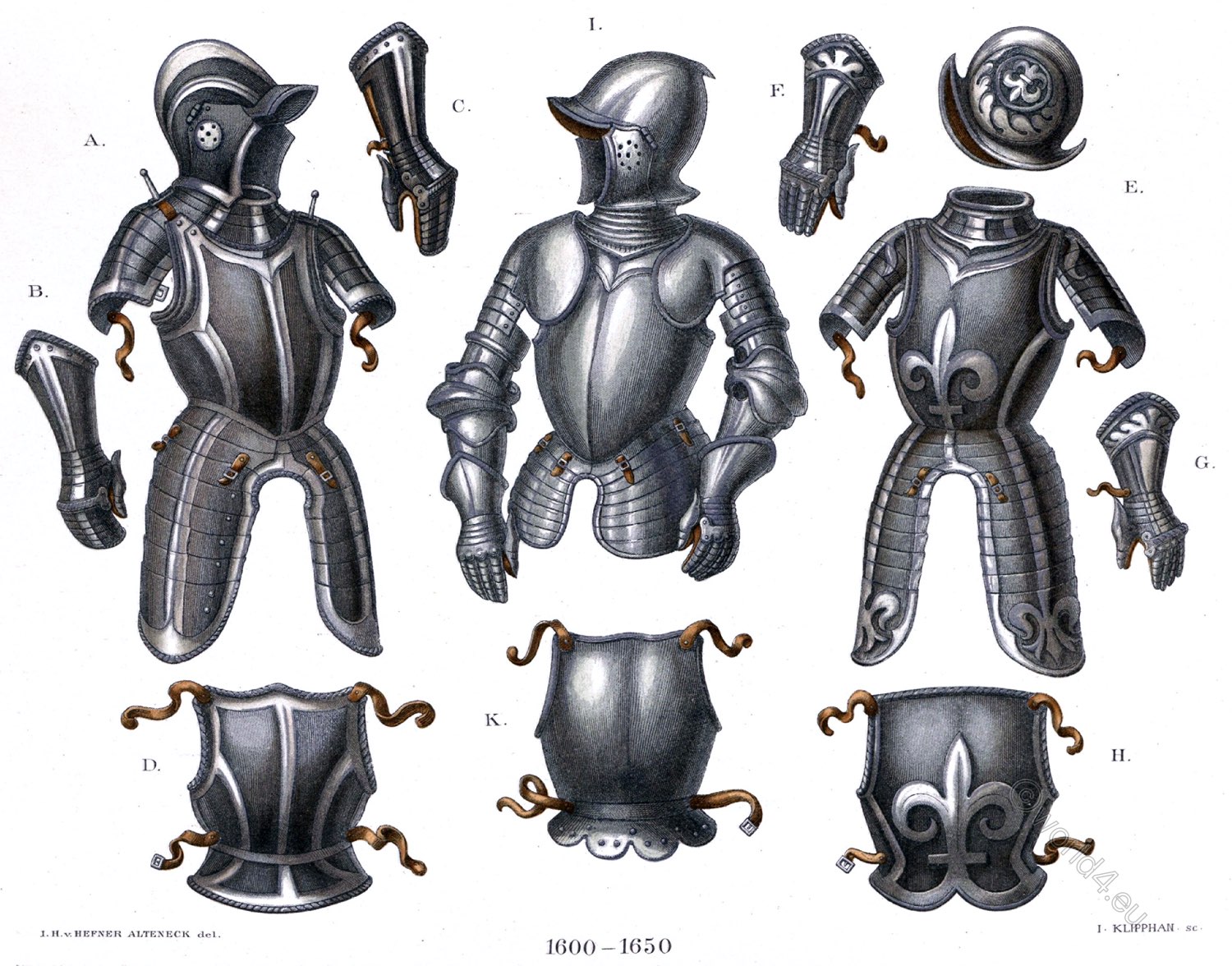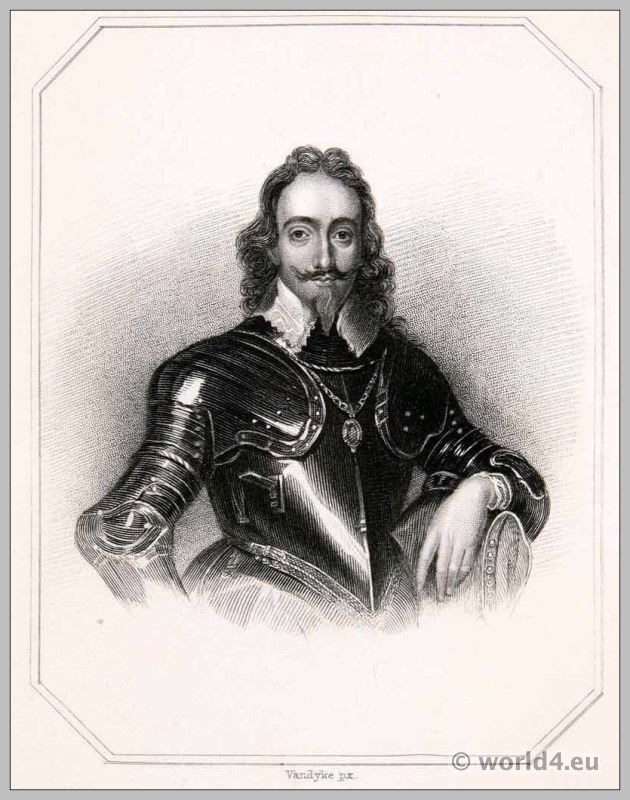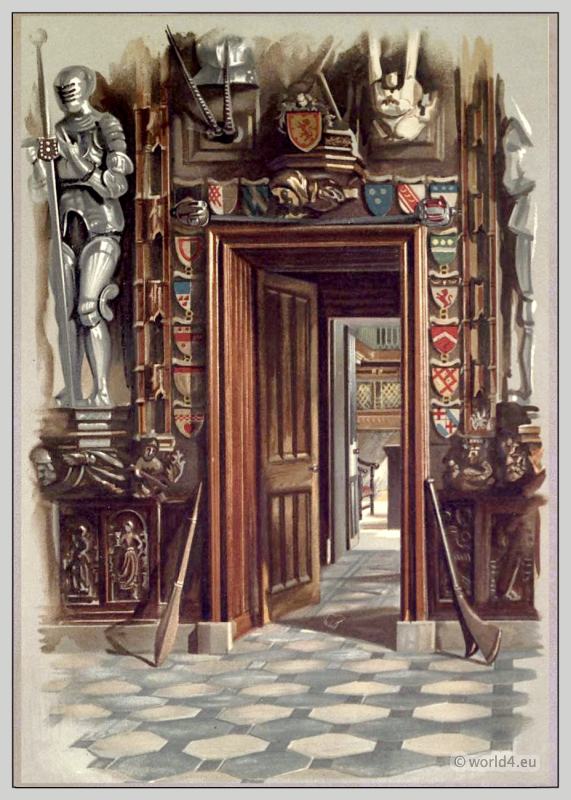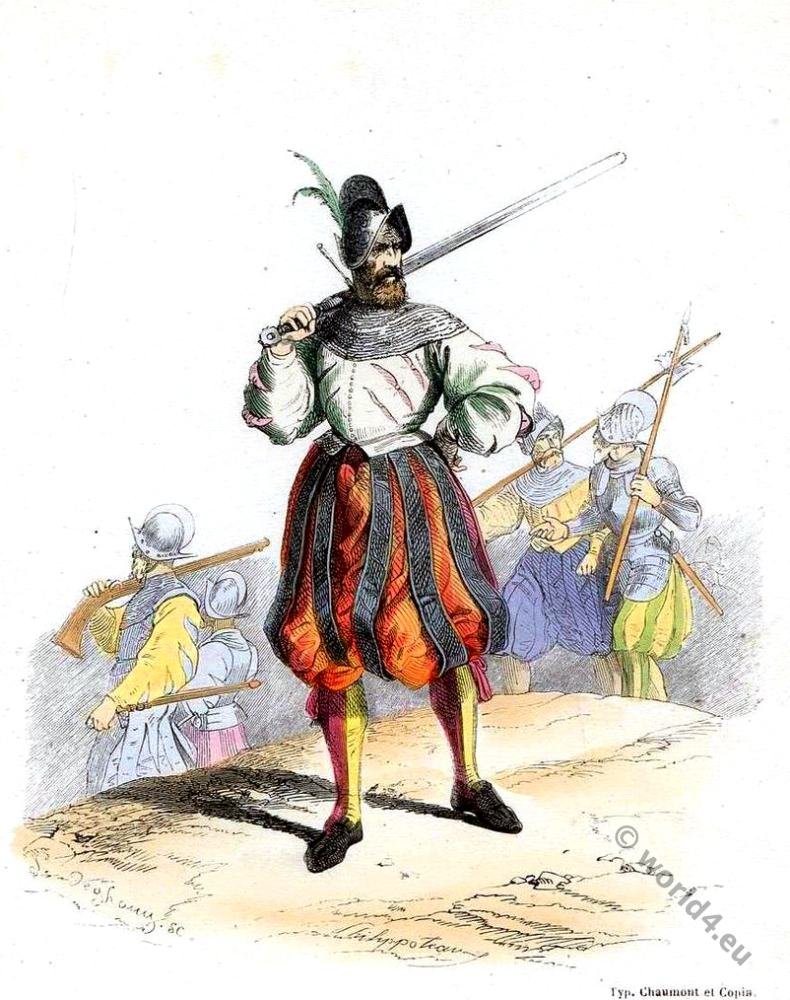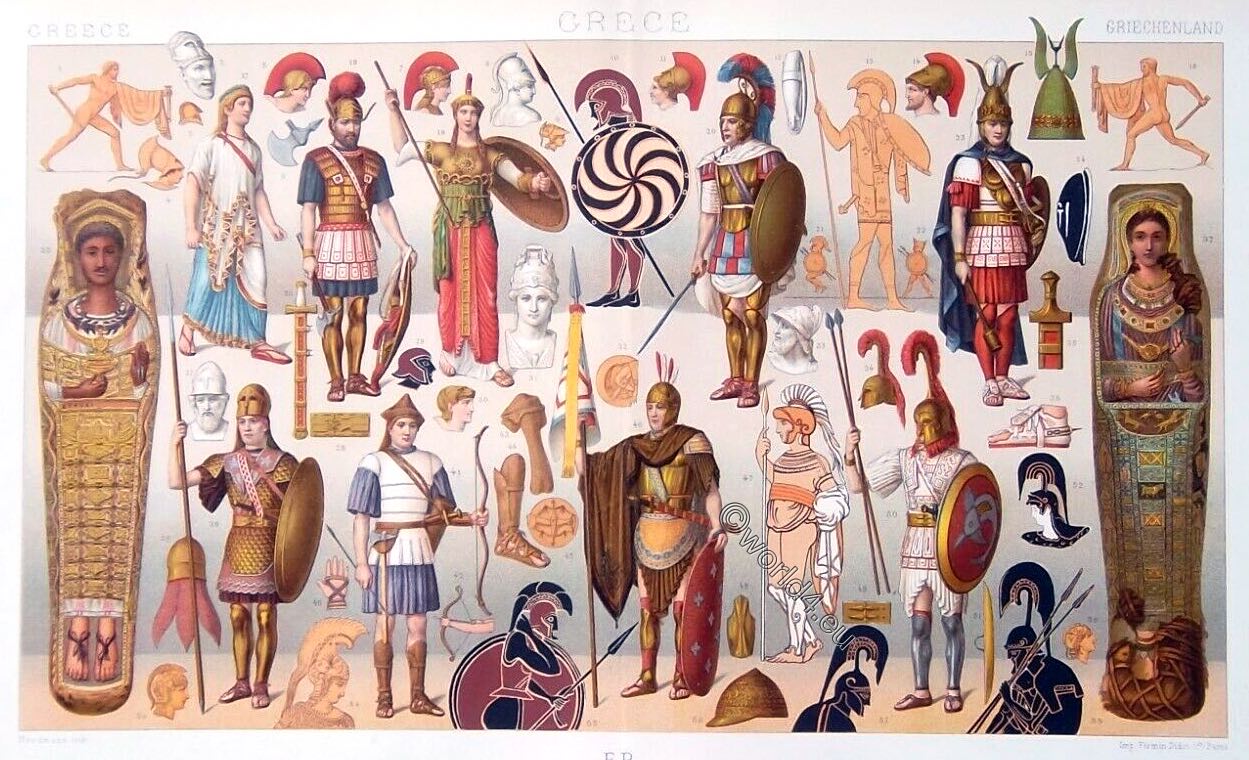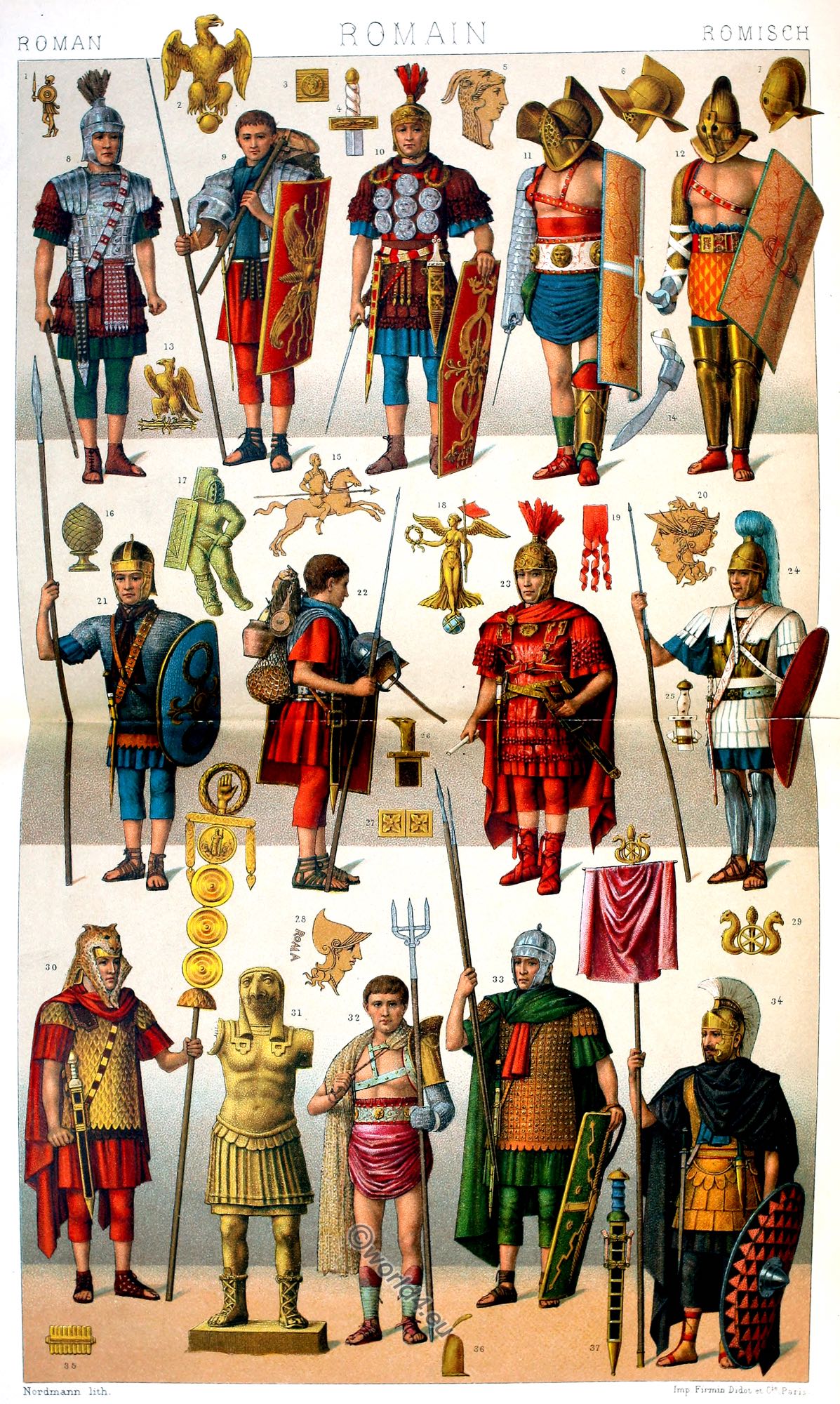Plate 682
Complete harnesses, half-armour of the Thirty Years’ War in the 17th century.
Three complete sets of half-armour from the first half of the 17th century. They show the most essential characteristics of the armour worn, with little variation, by the foot soldiers throughout the Thirty Years’ War *), starting with the common soldier of the foot soldiers up to the war colonel; exceptionally, they were also used on horseback; they are no longer equipped with visors and do not appear with the lower greaves.
The harness A has the balaclava with visor and two movable cheek pieces; the accompanying gloves (mittens) show B and C and the back piece D. The larger spaces on this armour are forged ready for the hammer, i.e. not grinded and not polished, but blackened; the broad stripes with which all parts of this armour are decorated and which have an obtuse angle in their centre are polished bright, but not polished.
*) The Thirty Years’ War from 1618 to 1648 was a conflict for hegemony in the Holy Roman Empire and in Europe that began as a religious war and ended as a territorial war. Together with their respective allies, the Habsburg powers of Austria and Spain fought out not only their territorial but also their dynastic conflicts of interest with France, the Netherlands, Denmark and Sweden, predominantly on the areas of Germany. The war was triggered by the defenestration of Prague on 23 May 1618, when the uprising of the Protestant Bohemian estates broke out openly. Beginning as a war between Protestant and Catholic states in the fragmented Holy Roman Empire, it gradually developed into a more general conflict involving most of the great European powers.
Source: Traditional costumes, works of art and utensils from the early Middle Ages to the end of the eighteenth century, after contemporaneous originals by Dr. J. H. von Hefner-Alteneck. Published by Heinrich Keller. Frankfort a. M. 1879-1889.


